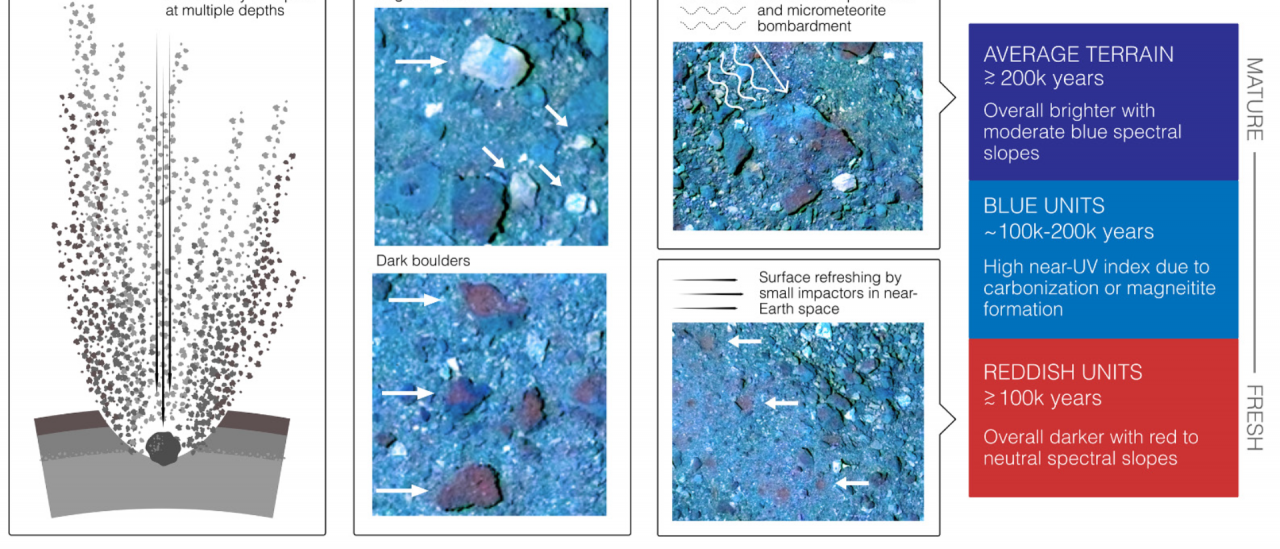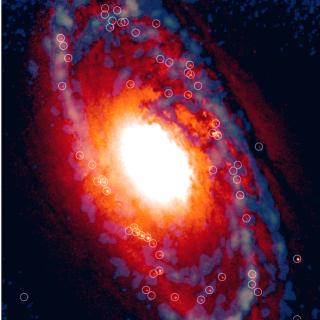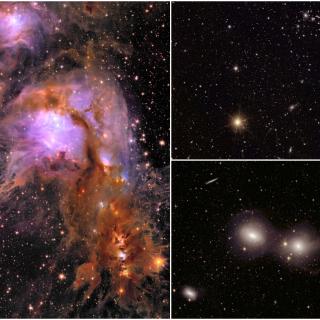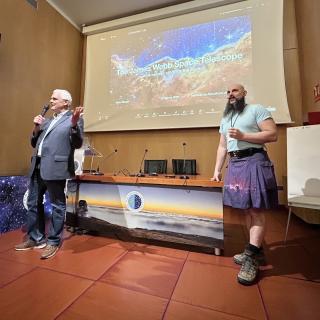The main objective of the NASA OSIRIS-REx mission is the collection of material from the surface of primitive asteroid (101955) Bennu, and to bring it back to the Earth. To provide general context to the results obtained from the analysis of this sample it is fundamental to carry out an extensive study of the surface of the asteroid. To do that, the spacecraft is provided, among other instruments, with an optical camera (MapCam) equipped with 4 color filters b’, v, w, and x, centered at 473, 550, 698, and 847 nm, respectively. This set-up allowed to do color studies, i.e., to analyze how the light of the Sun is reflected on the surface of the asteroid at each of these wavelengths or colors. With this information, it has been possible to infer the asteroid surface properties, like its rugosity, porosity, or the particle sizes. Even it has been possible to know the amount of time the surface has been exposed to the space. It is because of cosmic ray interaction, solar wind implantation, and micrometeorite bombardment of the surface of airless bodies modify its properties. All these effects are collectively known as “space weathering”. One of the most outstanding results obtained is that the great heterogeneity observed in the Bennu surface is a direct inheritance of the parent body from which it comes. Therefore, the different materials observed were found at different depths in the parent body and suffered different processes of aqueous alteration and heating. Moreover, a new mechanism has been proposed to explain how space weathering modifies the spectral properties of chondritic materials such as Bennu. There is a first stage where the exposed materials redden. Later, the amount of opaque materials like magnetite –that has also been identified by the team in the surface of Bennu— increases, producing a brightening in the ultraviolet region (short wavelengths). Finally, these color differences are neutralized, and the materials get bluer until they show the blue spectral slope that characterizes Bennu’s global surface.
Advertised on
Authors
D. N. DellaGiustina et al.
References




